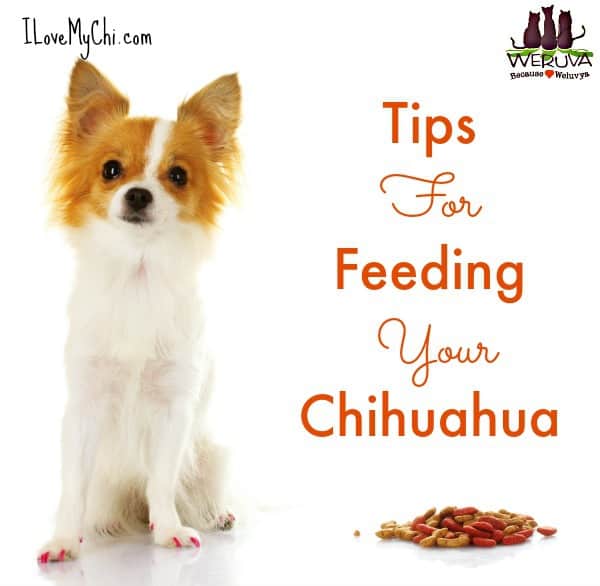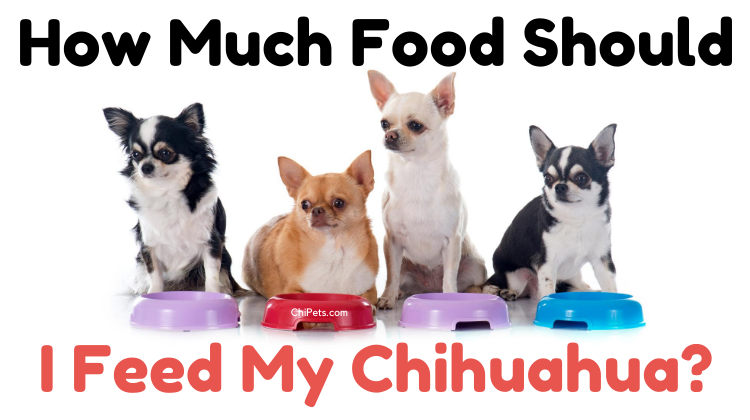As a proud chihuahua owner, I’m always concerned about what food to feed my furry friend. Did you know that chihuahuas have unique nutritional needs due to their small size and high metabolism? Finding the right food for them can be a challenge, but it’s crucial for their overall health and well-being.
When it comes to chihuahuas, it’s essential to choose a high-quality dog food specifically formulated for small breeds. These foods often contain the right balance of nutrients, including protein, fats, vitamins, and minerals, to support their energy levels and maintain a healthy weight. Additionally, it’s worth considering the size and shape of the kibble as chihuahuas may have difficulty chewing larger pieces. By selecting the right food and paying attention to portion sizes, you can help ensure that your chihuahua stays happy and healthy throughout their life.

What Food Should I Feed My Chihuahua?
Chihuahuas are small, energetic, and lovable dogs that make great companions. When it comes to feeding your Chihuahua, it’s essential to provide them with a balanced and nutritious diet that meets their specific needs. In this article, we will explore the best food options for your Chihuahua, including tips on choosing the right food, common dietary issues, and feeding guidelines. So, let’s dive in and learn what food is best for your adorable Chihuahua.
1. Understanding Your Chihuahua’s Nutritional Needs
Chihuahuas have unique nutritional requirements due to their small size and fast metabolism. As toy breeds, they need a diet packed with high-quality proteins, healthy fats, and controlled carbohydrates. The ideal food for Chihuahuas should contain essential nutrients like vitamins, minerals, antioxidants, and Omega-3 fatty acids. These nutrients contribute to their overall health, promote strong bones, support a shiny coat, and boost their immune system.
When selecting food for your Chihuahua, look for options specifically formulated for small breeds or toy breeds. These formulas often have smaller kibble sizes and higher energy density to meet their higher metabolism needs. Additionally, consider their age, activity level, and any specific health concerns when choosing the right food for your Chihuahua.
Feeding Guidelines:
To ensure your Chihuahua maintains a healthy weight, follow the feeding guidelines provided on the food packaging. Monitor their body condition regularly, and if necessary, adjust the portion sizes accordingly. Divide their daily food into two or three small meals to prevent digestive issues and help maintain their energy levels. Always provide fresh water alongside their meals and avoid overfeeding, as Chihuahuas are prone to obesity.
2. Wet Food vs. Dry Food: Which is Better for Chihuahuas?
The debate between wet food and dry food for Chihuahuas is a common one. Both options have their pros and cons, and the best choice for your Chihuahua depends on various factors. Let’s explore the differences between the two:
Wet Food:
Wet food, also known as canned food, contains a higher moisture content. It is often more palatable to Chihuahuas due to its richer flavors and softer texture. Wet food can be beneficial for Chihuahuas with dental issues or those who struggle to chew dry kibble. Additionally, it can help maintain hydration, especially if your Chihuahua doesn’t drink enough water. However, wet food is more expensive and has a shorter shelf life once opened.
Dry Food:
Dry food, also known as kibble, is a popular choice for many Chihuahua owners. It is convenient, cost-effective, and has a longer shelf life. Dry food also promotes dental health by reducing tartar buildup through chewing. However, some Chihuahuas may find it harder to chew due to their small mouths. To make dry food more appetizing, you can mix it with a small amount of wet food or add warm water to soften it.
To decide between wet and dry food for your Chihuahua, consider their individual preferences, dental health, and any specific dietary requirements they may have. You can also consult your veterinarian for personalized advice based on your Chihuahua’s needs.
3. Common Dietary Issues in Chihuahuas
Chihuahuas may be prone to certain dietary issues that require special attention. Here are some common dietary concerns to watch for in your Chihuahua:
Food Allergies or Sensitivities:
Chihuahuas, like any other dog breed, can develop food allergies or sensitivities. Common allergens include ingredients like chicken, beef, grains, or artificial additives. If you notice signs of allergies such as skin irritations, digestive issues, or excessive itching, consult your veterinarian to determine the allergen and switch to a hypoallergenic diet if necessary.
Hypoglycemia:
Chihuahuas have a high metabolism, meaning they burn energy quickly. This can lead to low blood sugar levels, known as hypoglycemia. To prevent this, feed your Chihuahua frequent small meals throughout the day, ensuring a balance of proteins, fats, and carbohydrates. It’s also important to monitor their energy levels and provide them with treats specifically formulated for small dogs.
Dental Problems:
Due to their small size, Chihuahuas are prone to dental issues such as periodontal disease and tooth decay. Choosing the right food can help promote good dental health. Consider feeding your Chihuahua dry kibble designed to support dental hygiene and provide dental chews or toys for additional oral care.
In conclusion, feeding your Chihuahua a nutritious and balanced diet is essential for their overall health and well-being. Choose high-quality food formulated for small breeds, consider their age and specific needs, and monitor their weight to prevent obesity. Whether you opt for wet food or dry food depends on your Chihuahua’s preferences and individual requirements. Finally, be aware of common dietary issues in Chihuahuas and take necessary measures to address them for a happy, healthy pet.
Key Takeaways: What Food Should I Feed My Chihuahua?
- 1. Choose a high-quality, balanced dog food that is specifically formulated for small breeds like Chihuahuas.
- 2. Look for a food that contains real meat as the first ingredient and has a good balance of protein, fat, and carbohydrates.
- 3. Avoid food with artificial colors, flavors, and preservatives, as well as those that have excessive fillers or by-products.
- 4. Consider the age, weight, and any specific dietary needs or sensitivities of your Chihuahua when selecting their food.
- 5. It’s always a good idea to consult with your veterinarian to get personalized recommendations for your Chihuahua’s diet.
Frequently Asked Questions
Are you unsure about what food to feed your chihuahua? We’ve got you covered with answers to some common questions.
1. What are the nutritional needs of a chihuahua?
Chihuahuas require a balanced diet that consists of protein, carbohydrates, fats, vitamins, and minerals. High-quality dog food formulated specifically for small breeds is the best option. Look for a brand that lists real meat as the first ingredient and does not contain artificial preservatives or fillers. Consult your veterinarian to determine the specific nutritional needs of your chihuahua as they can vary depending on age, activity level, and any existing health conditions.
Additionally, chihuahuas have small mouths, so it’s important to choose kibble size appropriate for their breed. Consider dry food options that are specifically designed for small dogs to aid in digestion and dental health.
2. Can I feed my chihuahua a homemade diet?
While feeding a homemade diet to your chihuahua is possible, it requires careful planning and consultation with a veterinary nutritionist. Homemade diets can be nutritionally balanced, but they must include the essential nutrients that your chihuahua needs.
Including a variety of lean meats, vegetables, and whole grains can provide the necessary nutrients, but it’s important to avoid ingredients that are toxic to dogs such as onions, garlic, grapes, and chocolate. Keep in mind that homemade diets may require more time and effort to prepare than commercial dog food.
3. How often should I feed my chihuahua?
Chihuahuas have small stomachs, so it’s recommended to feed them small, frequent meals throughout the day. Most chihuahuas do well with two to four meals per day, depending on their age and activity level. Puppies may require more frequent feedings, while adult chihuahuas can generally thrive on two to three meals.
By dividing their daily portion into multiple meals, you can prevent overeating and reduce the risk of digestive issues. It’s important to establish a feeding schedule and stick to it to maintain their digestive health and prevent weight gain.
4. Should I include wet or dry food in my chihuahua’s diet?
Both wet and dry food options can be suitable for chihuahuas. Dry kibble is generally more convenient, as it promotes dental health and helps control tartar buildup. It’s also easier to measure and store. Wet food, on the other hand, can provide additional hydration, especially for chihuahuas who are not avid drinkers. It can be beneficial for senior chihuahuas or those with dental issues who may struggle with crunchy kibble.
A combination of wet and dry food can also be an option to provide variety and cater to your chihuahua’s preferences. Remember to adjust the overall amount of food based on your chihuahua’s individual needs to prevent overfeeding.
5. Can chihuahuas eat human food?
While some human foods can be safe for chihuahuas, it’s essential to be aware of what is harmful. Many common human foods can be toxic to dogs, including chocolate, onions, garlic, grapes, raisins, and certain artificial sweeteners. It’s best to err on the side of caution and avoid feeding your chihuahua table scraps.
If you want to share a small amount of food from your plate, opt for dog-friendly options such as lean, cooked meats (without seasoning or spices), plain vegetables like carrots or green beans, or a few small pieces of fruit like apple or banana. Always introduce new foods gradually and in small portions to monitor any possible adverse reactions.

